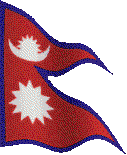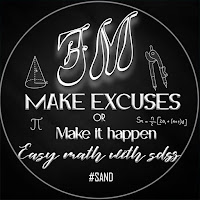WEEKLY
ASSIGNMENT 6
1.
 In the given figure alongside, ABCD is a rectangle and M is the point
on DC. If area of rectangle is 82cm2, find the area of
In the given figure alongside, ABCD is a rectangle and M is the point
on DC. If area of rectangle is 82cm2, find the area of  ABM.
ABM.
Solution : Area of ABM = ½ Area of
rectangleABCD
ABM = ½ Area of
rectangleABCD
= ½ 82
= 41cm2
82
= 41cm2
 In the given figure alongside, ABCD is a rectangle and M is the point
on DC. If area of rectangle is 82cm2, find the area of
In the given figure alongside, ABCD is a rectangle and M is the point
on DC. If area of rectangle is 82cm2, find the area of Solution : Area of
= ½
2.
Find the
LCM : 3(a3+b3), a(a2–ab+b2)
Solution : First expression = 3(a3+b3)
= 3(a + b)(a2 ab+b2)
ab+b2)
Second expression = a(a2 – ab + b2)
LCM = CF RF
RF
= (a2 – ab + b2) 3(a+b)
3(a+b)  a
a
= 3a(a3+b3)
Solution : First expression = 3(a3+b3)
= 3(a + b)(a2
Second expression = a(a2 – ab + b2)
LCM = CF
= (a2 – ab + b2)
= 3a(a3+b3)
3.
 Find the HCF : x2+5x–6 , x3–1
Find the HCF : x2+5x–6 , x3–1
Solution : First expression = x2 – 5x +6
= x2 – (3+2)x + 6
= x2 – 3x – 2x +6
= x(x – 3 ) – 2(x – 3)
= (x – 3)(x – 2)
Second expression = x3 – 1
= (x)3 – (1)3
= (x – 1)(x2+x.1 + 12)
= (x – 1)(x2+x + 1)
HCF = 1
 Find the HCF : x2+5x–6 , x3–1
Find the HCF : x2+5x–6 , x3–1Solution : First expression = x2 – 5x +6
= x2 – (3+2)x + 6
= x2 – 3x – 2x +6
= x(x – 3 ) – 2(x – 3)
= (x – 3)(x – 2)
Second expression = x3 – 1
= (x)3 – (1)3
= (x – 1)(x2+x.1 + 12)
= (x – 1)(x2+x + 1)
HCF = 1
4.
 In the given figure, ABCD is a square whose length of side is 8cm. If
AE=10cm, find the length of BF
In the given figure, ABCD is a square whose length of side is 8cm. If
AE=10cm, find the length of BF
Solution : Area of square ABCD = 2 Area of
Area of  AEB
AEB
or, (side)2 = 2 ½ AE
½ AE BF
BF
or, (8)2 = 10 BF
BF
or, 64 = 10 BF
BF
or, 6.4 cm = BF
 In the given figure, ABCD is a square whose length of side is 8cm. If
AE=10cm, find the length of BF
In the given figure, ABCD is a square whose length of side is 8cm. If
AE=10cm, find the length of BFSolution : Area of square ABCD = 2
or, (side)2 = 2
or, (8)2 = 10
or, 64 = 10
or, 6.4 cm = BF
5. In the given figure, ABCD is a
parallelogram and M is the midpoint of BC. If AD=2MD=20cm,  DMC =30o, find the area of
DMC =30o, find the area of
 ABM
ABM
Solution :
We are given,
AD =BC = 20cm, 2MD = 20cm so, MD = 10cm
Since M is the midpoint of BC, 2MC = BC
i.e, 2MC = 20 cm so, MC = 10cm
Now,
Area of ∆DCM = ½ DM ×MC × Sin ∡DMC
= ½ ×10 ×10 ×Sin30o
= ½ ×10 ×10 × ½
= 25cm2
Since, ∆DCM and ABM lie on equal base and
same parallels , Area of
ABM lie on equal base and
same parallels , Area of  ABM = 25cm2
ABM = 25cm2
Solution :
We are given,
AD =BC = 20cm, 2MD = 20cm so, MD = 10cm
Since M is the midpoint of BC, 2MC = BC
i.e, 2MC = 20 cm so, MC = 10cm
Now,
Area of ∆DCM = ½ DM ×MC × Sin ∡DMC
= ½ ×10 ×10 ×Sin30o
= ½ ×10 ×10 × ½
= 25cm2
Since, ∆DCM and
6. In a continuous series, if mean( = 20, If
= 20, If  fm = 25a+80 and
fm = 25a+80 and  f= a+10, find the value of a.
f= a+10, find the value of a.
Solution :
We are given,
mean( = 20,
= 20,  = 25a+80 and
= 25a+80 and  f= a+10
f= a+10
Now,
Mean( =
= 
or, 20 =
or, 20(a + 10) = 25a + 80
or, 20a + 200 = 25a + 80
or, 200 – 80 = 25a – 20a
or, 120 = 5a
or, 24 = a
Hence the value of a is 24.
Solution :
We are given,
mean(
Now,
Mean(
or, 20 =
or, 20(a + 10) = 25a + 80
or, 20a + 200 = 25a + 80
or, 200 – 80 = 25a – 20a
or, 120 = 5a
or, 24 = a
Hence the value of a is 24.
7.  Two children were given birth by a couple at the interval of 4 years.
Illustrate the
Two children were given birth by a couple at the interval of 4 years.
Illustrate the
probabilities of having son or daughter by drawing a tree diagram and calculate the
probability of both are daughters.
Solution :
Let S and D denote the set of Son and Daughter respectively.
n(S)= 1, n(D) = 1
P(DD) = ½ × ½ = ¼
Hence the probability of both are daughter is ¼.
 Two children were given birth by a couple at the interval of 4 years.
Illustrate the
Two children were given birth by a couple at the interval of 4 years.
Illustrate the probabilities of having son or daughter by drawing a tree diagram and calculate the
probability of both are daughters.
Solution :
Let S and D denote the set of Son and Daughter respectively.
n(S)= 1, n(D) = 1
P(DD) = ½ × ½ = ¼
Hence the probability of both are daughter is ¼.
8.  In a group of 65 players, 11 play basketball only and 33 play Cricket
only. If the number of players who play Cricket is twice the number of students
who play Basketball, by using Venn diagram find the number of players who play
both games and who don’t play any game.
In a group of 65 players, 11 play basketball only and 33 play Cricket
only. If the number of players who play Cricket is twice the number of students
who play Basketball, by using Venn diagram find the number of players who play
both games and who don’t play any game.
Solution :
Let B and C denote the set of players who play Basketball and Cricket respectively.
We are given,
n(U) = 65
no(B) =11
no(C) = 33
n(B∩C) = ? x (say)
n( )= ?y (say)
)= ?y (say)
According to question,
n(C) = 2 × n(B)
or, 33+x = 2(11+x)
or, 33+x = 22+2x
or, 33–22 = 2x–x
or, 11 = x
From above Venn-diagram,
n(U) = 11+x+33+y
or, 65 = 11+11+33+y = 55+y
or, 65–55 = y
or, 10 = y
Hence, the number of players who play both is 11 and who play none is 10.
 In a group of 65 players, 11 play basketball only and 33 play Cricket
only. If the number of players who play Cricket is twice the number of students
who play Basketball, by using Venn diagram find the number of players who play
both games and who don’t play any game.
In a group of 65 players, 11 play basketball only and 33 play Cricket
only. If the number of players who play Cricket is twice the number of students
who play Basketball, by using Venn diagram find the number of players who play
both games and who don’t play any game.Solution :
Let B and C denote the set of players who play Basketball and Cricket respectively.
We are given,
n(U) = 65
no(B) =11
no(C) = 33
n(B∩C) = ? x (say)
n(
According to question,
n(C) = 2 × n(B)
or, 33+x = 2(11+x)
or, 33+x = 22+2x
or, 33–22 = 2x–x
or, 11 = x
From above Venn-diagram,
n(U) = 11+x+33+y
or, 65 = 11+11+33+y = 55+y
or, 65–55 = y
or, 10 = y
Hence, the number of players who play both is 11 and who play none is 10.
9. An umbrella is made by stitching 8
triangular pieces of cloths of two different colors each piece measuring 30cm,
113cm, 113cm. How much cloth is required for the umbrella? Find the cost of
cloth at the rate of Rs 2 per cm2.
Solution:
Here, measure of sides of triangle are 113cm , 113cm , 30cm
Now,
Area of isosceles triangle =

=

= 1680cm2
So, Area of 8 triangular pieces = 8 × 1680 = 13,440cm2
Hence, 13,440cm2 of cloth is required.
Total cost = 13,440 × 2 = Rs 26,880
Solution:
Here, measure of sides of triangle are 113cm , 113cm , 30cm
Now,
Area of isosceles triangle =
=
= 1680cm2
So, Area of 8 triangular pieces = 8 × 1680 = 13,440cm2
Hence, 13,440cm2 of cloth is required.
Total cost = 13,440 × 2 = Rs 26,880
10. Simplify :  +
+  +
+ 
Solution:  +
+  +
+ 
= +
+  +
+ 
= +
+ 
= +
+ 
= +
+ 
= +
+ 
=
=
=
=
=
=
=
=
=
=
=
=
=
=
=



